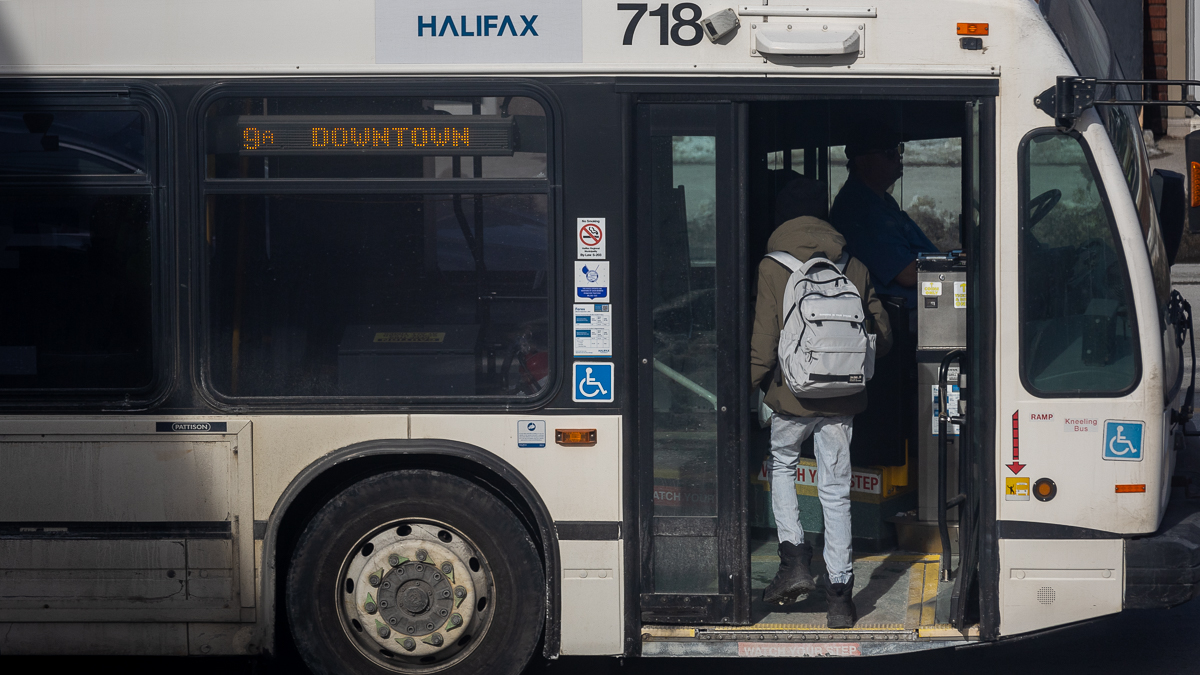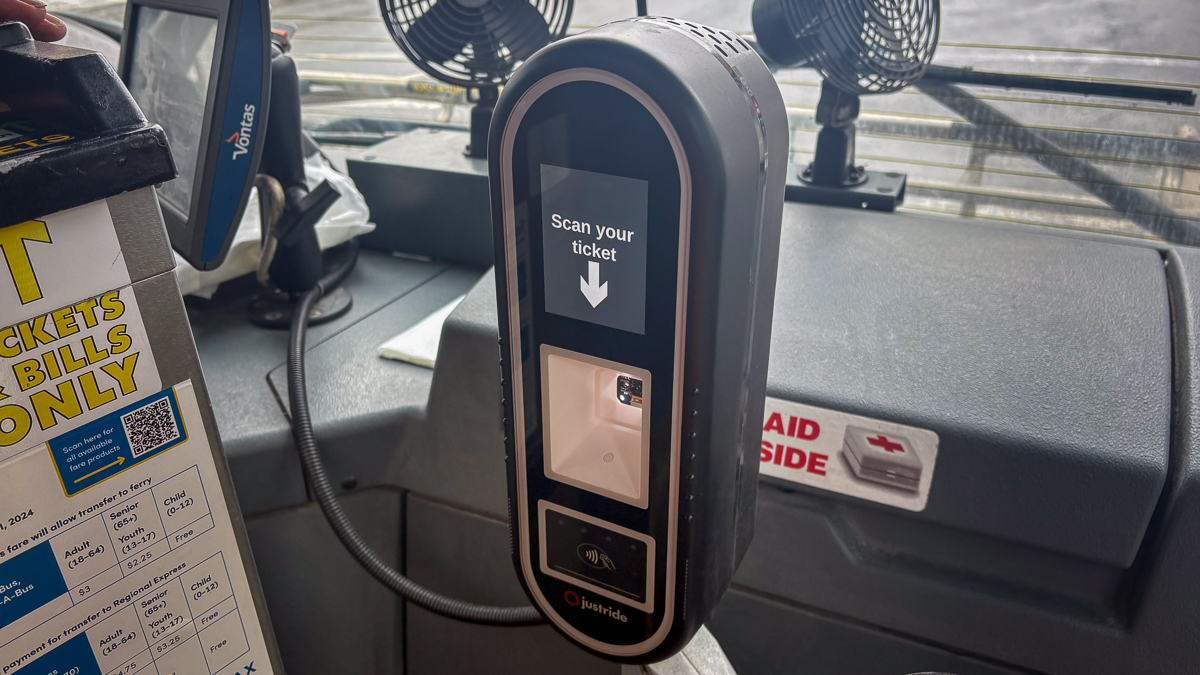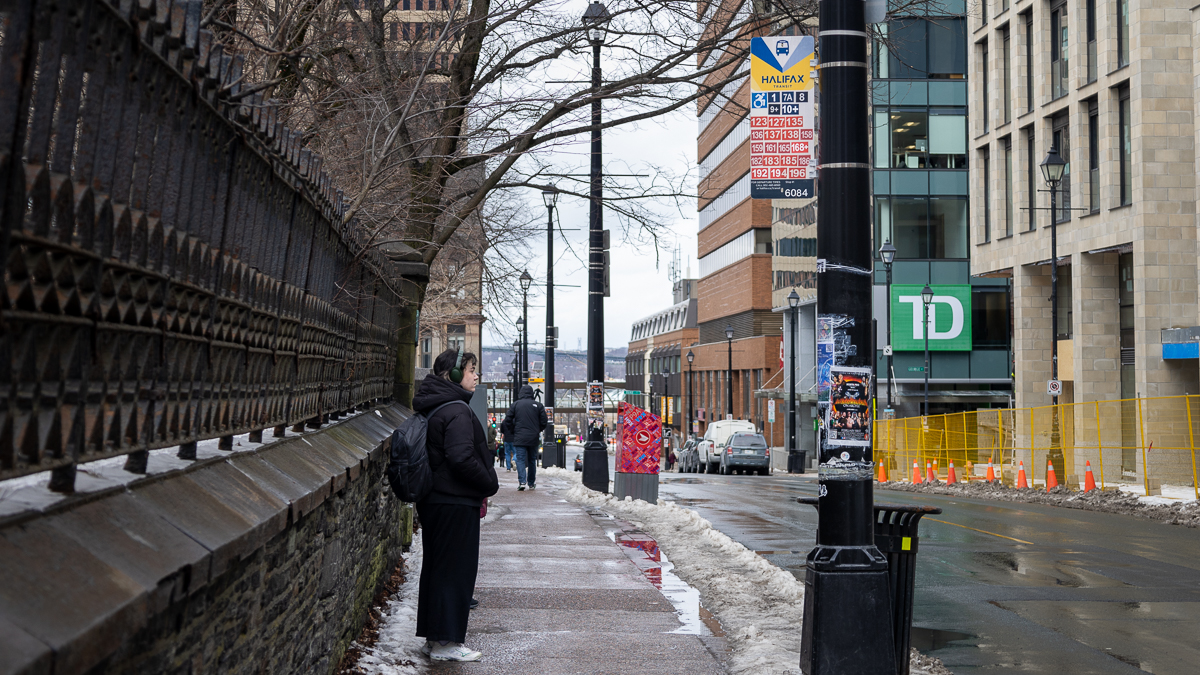Halifax Transit skips smart cards; goes straight to tap payments
New modems will replace two old modems on each city bus

caption
A passenger enters the 9A bus on Quinpool Road heading towards downtown Halifax.Halifax Transit is putting a plan for reloadable plastic smart cards on the backburner, as it pushes ahead to implement mobile payments aboard vehicles.
The transit service was originally set to introduce smart cards as phase three of its fare management plan, with phase four being open payment. But the organization’s manager of technical services says Halifax Transit is jumping straight to credit or debit tap payments in phase four.
“Open payment seems like the logical place for us to go,” said Marc Santilli. “Everybody’s got a credit card, everybody’s got a debit card, it would just be that much more accessible.”
He said smart cards aren’t fully off the table, but they cost a lot more to set up due to placing kiosks around the city to get physical cards. Related stories
The move is being made as Halifax Transit works to replace all modems in the vehicles and ferries.
The old ones were originally intended to support open payment. It wasn’t until after further testing that Halifax Transit realized a miscommunication within HRM led to the discovery they didn’t work for that purpose.
Santilli said the issue lies in the onboard validators – the machines that check the tickets when passengers board – which are not connected to the backend system that would allow for card payment.
“We spent a bunch of time trying to make it work. We couldn’t,” said Santilli. “And then we decided these modems that we have on the buses will need to be replaced soon enough anyway, because they’re approaching end of life.”
There are currently two modems on each bus: one for the GPS that also tracks app fares; and one for security. The GPS modems supported the launch of real-time location functionality on transit vehicles in 2017.

caption
A scanner on a Halifax Transit bus that allows riders to scan their tickets from the HFXGO app.Halifax regional council approved a $769,000 purchase of new modems in January that will replace both old modems on each bus.
Santilli said the installation time for each modem will vary due to the different bus models in the fleet. He estimates that installing a modem in one of the 378 buses and ferries will take about two to three hours and is hoping to complete the project in three to five months after receiving the shipment.
Once established, the connection will improve data reporting and will allow for future open payment of debit and credit cards.
“The whole issue with the connectivity for the onboard validators has definitely slowed things down significantly, we hoped we’d be a little further along than we are,” said Santilli. “I wouldn’t say it’s a massive delay, but definitely disappointing.”
Once the new modems are installed, then Halifax Transit will be able to gather data to plan the system more efficiently. This could help tailor the transit service to meet the city needs.

caption
A passenger waits for a bus at a stop on Barrington Street in downtown Halifax.About the author

Elena Neufeld
Elena Neufeld grew up on a farm near Margaret, Manitoba. She loves photography and film and is a member of the UKC women's volleyball team.
